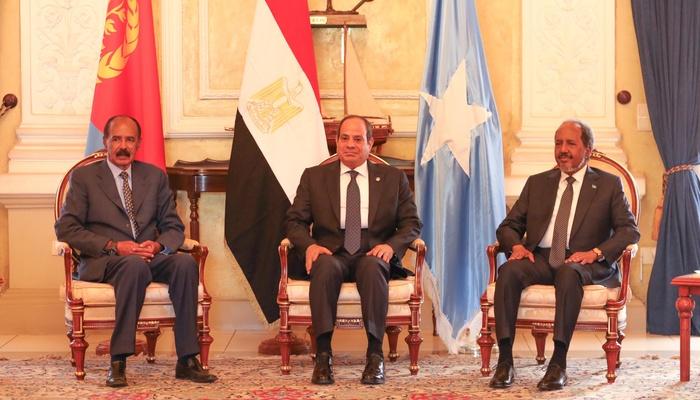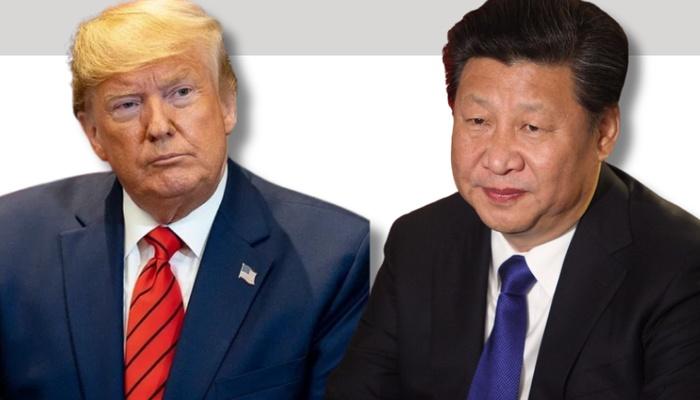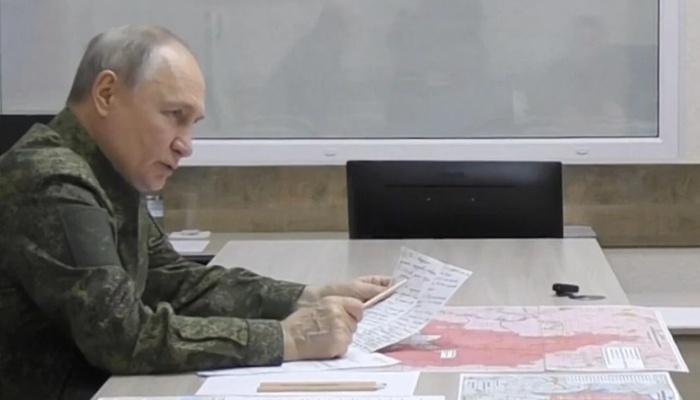The Repercussions of US Tariffs on Asia: Countermeasures, Market Collapse, and Erosion of Confidence
The announcement by U.S. President Donald Trump regarding the implementation of global tariffs has had deleterious effects across the Asian continent. Specifically, between 4 and 7 April, dramatic drops were recorded across all financial markets in the region, with Monday’s losses exceeding 13% in Hong Kong (the worst drop since 1997), nearly 10% in Taiwan, and exceeding 7% in Japan, Singapore, and China. Notably, Beijing’s swift decision to retaliate by imposing a 34% tariff on all U.S. goods starting April 10, in addition to the previously announced tariffs of 10%-15% on certain agricultural products and machinery, contributed to unleashing a perfect storm in regional markets first, and then globally. Concurrently, the Chinese authorities announced further countermeasures, including an immediate restriction on the export of seven elements from the rare earths list. In an effort to stabilise a highly critical situation, on April 7, the principal Chinese sovereign fund company, Central Huijin Investment, publicly expressed its intention to increase its holdings in exchange-traded funds. Meanwhile, in China, there are ongoing discussions about the necessary stimuli to stabilise markets and support consumption in the immediate future. Indeed, this crisis arrives at a time when the People’s Republic is grappling with the urgent need to stimulate domestic demand and revitalise the persistently troubled real estate market. Significant new interventions to support the economy had already been announced following the traditional “two sessions”, during which China presented its macroeconomic targets for 2025, including a growth rate of 5%, a deficit-to-GDP ratio of 4% (an increase of approximately one point compared to 2024), and a target for the consumer price index around 2%.
In this context, China had already planned to issue approximately 4.4 trillion yuan in special local government bonds, intended for investments in infrastructure, the purchase of unused land and unsold housing, and settling arrears to state contractors. Additionally, about 500 billion yuan in special sovereign bonds were planned to recapitalize state-owned banks. However, the recent turmoil in global markets necessitates swift additional measures, including potential interest rate cuts and an increase in the deficit. Besides, there is also pressure on Chinese companies to refrain from investing in the U.S. market before potential negotiations begin. On the other hand, the United States has long pressured China on outward foreign direct investment, attempting to redirect international investors to other markets. India is the primary target of this strategy, which has so far proven largely ineffective and has been further complicated by the recent measures. Ultimately, the People’s Republic may also suffer from the slowdown in regional economies, as its immediate neighbourhood, with which China’s economy is increasingly interconnected, especially in terms of foreign direct investment, has been significantly impacted by U.S. tariffs.
As global recession risks rise, President Trump’s announcement of tariffs has severely impacted the United States’ partner countries in Asia, with clear effects on their trust in the Republican administration. In a message to the nation, Singapore’s Prime Minister, Lawrence Wong, stated that the end of the era of rule-based globalization and free trade could have highly detrimental impacts on export-oriented economies. With a 10% tariff imposed by the U.S., Singapore now fears that the trade war could escalate, with countermeasures and responses that might marginalize small countries in the medium and long term. All Southeast Asian actors have been significantly impacted by the tariffs, including Vietnam (46%), Thailand (36%), Indonesia (32%), Malaysia (24%), Cambodia (49%), the Philippines (17%), Myanmar (44%), and Laos (48%). For Hanoi, in particular, the Trump administration’s decision is overwhelmingly negative, as the U.S. is its primary export partner, with $136.6 billion worth of goods sold in 2024, a 19.3% increase from the previous year. Vietnam, which had benefited from the U.S.-China trade conflict and positioned itself as a preferred destination for those companies looking to diversify production to avoid tariff regimes, has called for the suspension of tariffs and the opening of negotiations. It is also worth noting that the country has hosted several U.S. giants over the years, such as Intel, Cargill, Nike, Murphy Oil, First Solar, Boeing and Apple, seeking, among others, cheap labour, but this was not enough to be excluded from the list of sanctioned countries. A similar paradox is currently being experienced by India, which has emerged as a key economic partner for the U.S. in Asia but is still affected by a 26% tariff. Narendra Modi’s India exported more than USD 80 billion worth of goods to the U.S. in 2024, and the new measures could have an impact on efforts to strengthen the manufacturing sector and increase related exports. However, the Asian giant might mitigate the damage, as the tariffs announced so far do not affect the pharmaceutical industry, one of the country’s most developed sectors. Additionally, the tariffs are lower than those imposed on major regional competitors such as China, Vietnam, Thailand, Bangladesh, and Sri Lanka. Nevertheless, New Delhi remains confident in its ability to persuade Washington to withdraw the announced tariffs after negotiations, although the excellent relations between the respective leaders have not yet produced the desired results. Against this background, Washington and New Delhi are negotiating a new trade agreement, and the tariffs imposed by Trump could therefore be used by the Republican administration to achieve results at the negotiating table.
Among the U.S. partners affected by the tariffs are the Philippines. However, Manila does not appear particularly concerned at the moment, as some key products exported to the American market, such as copper and integrated circuits, have not been included in the protectionist measures announced so far. Moreover, exports represent a relatively small share of the national GDP, and the country could benefit from a lower tariff threshold, set at “only” 17%. Meanwhile, Taiwan, which is facing 32% tariffs, has announced that it will not implement countermeasures. Instead, President Lai Ching-te has expressed a willingness to remove non-tariff barriers to U.S. imports. In response to the situation, Taiwanese authorities have introduced a comprehensive strategy aimed at mitigating the impact of U.S. trade policies. This strategy includes efforts to negotiate the removal of the tariffs, increase imports of “Made in USA” products, and protect the most affected industries. Furthermore, Lai stressed the importance of helping the U.S. administration understand the significance of the existing partnership, expanding the share of investments in the U.S., which already exceeds $100 billion. Despite its call for unity among political forces at this critical stage, the ruling Democratic Progressive Party faces strong criticism from the opposition, which seems willing to exploit tensions with the U.S. to gain popular support.
On April 7, Japanese Prime Minister Shigeru Ishiba scheduled a phone call with President Trump after the Nikkei index dropped by 7.44% and the Topix lost 8.14%. Japan’s approach, at this stage, seems focused on avoiding confrontation, although Ishiba has emphasized that investments in the U.S. will depend on the removal of the 24% tariffs imposed. South Korea, similarly affected by a 25% tariff that was later increased to 26%, is preparing to begin negotiations to prevent the measures from taking effect on April 9, while adopting a seemingly non-confrontational stance. The country, deeply polarised and having only recently emerged from a prolonged institutional crisis with the removal of President Yoon Suk Yeol, faces the challenge of negotiating during a politically critical period. Furthermore, as highlighted by political leaders in Singapore, Seoul struggles to fully comprehend the American demands, as even direct investment announcements in the U.S., such as Hyundai Motor’s $21 billion plan, have not been sufficient to exempt the country from the list of nations subject to tariffs.
In this context, Asian actors seem to share the view of a profound shift in economic relations with the United States and fear an escalation of the trade dispute on a global scale, with enormous consequences for national production systems. At the same time, responses to the measures introduced by Washington are scattered, and there is growing uncertainty regarding the real motivations behind Trump’s decision to announce large-scale tariffs based on economically obscure criteria. Even the commitment to increasing their economic presence in the U.S. market, so far promised or realised by actors such as Taiwan, South Korea, India, and Japan, has not produced the expected results, and the risk is that regional competition will intensify, potentially opening up vast opportunities for economically stronger players like China. However, Beijing itself fears that a global recession could have a negative impact on expected growth rates, a scenario that New Delhi also wants to avoid. Overall, in the absence of a change in course by the Trump administration, U.S. protectionist trade policy risks undermining the political and economic stability of America’s traditional alliances in Asia, the future of which now appears tied to the outcome of negotiations, the results of which remain far from certain.





